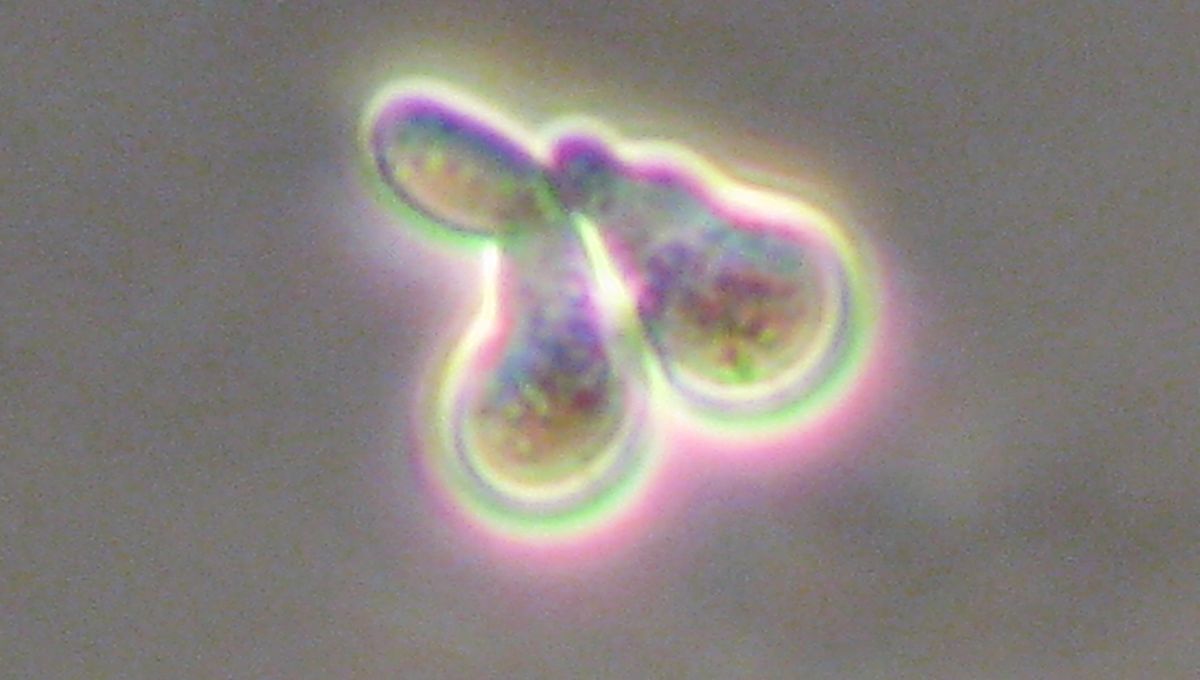
Did you know that the yeast used to make beer and bread is capable of sexual reproduction? That’s right – these single-celled fungi can get it on in a process called “shmooing”.
The term originates from the fact that, when they’re getting down to it, yeast cells resemble a shmoo: a blobby, rotund character created by cartoonist Al Capp in 1948. Although it is difficult to track down the first use of the phrase, multiple sources point toward Dr Herschel Roman as the one who coined the term “shmoo” in reference to yeast sex. Dr Roman pioneered the use of yeast in genetics research and founded the department of genetics at the University of Washington, and died in 1989.
Much research on the subject focuses on Saccharomyces cerevisiae, aka brewer’s yeast, although shmooing has also been observed in the species Schizosaccharomyces pombe. So what’s the science behind the shmoo?
S.cerevisiae has three cell types: the haploid types a and α, and the diploid type a/α. Haploid cells have a single set of chromosomes, whereas diploid cells have two sets. Diploid yeast cells reproduce asexually, as do haploid cells – but the haploids are also capable of something a little saucier.
Haploid cells can express pheromones: either α-factor or a-factor depending on their mating type. Haploids also have receptors that bind to the pheromones of the opposite type. The haploid cells can actually change type by rearranging their DNA, and “the effect of mating-type switching is that a haploid can create a mating partner for itself when no other potential partners are nearby,” the authors of a 2017 paper note.
The cells have an all-or-nothing response to these pheromones, responding within two minutes if the concentration is high enough. “Shmooing is a very energy-intensive process for yeast cells. We think this switching process at a certain pheromone concentration may have evolved to make sure the cells only get prepared for sexual reproduction if a mate is sufficiently close enough and able to mate,” researcher Dr Vahid Shahrezaei explained in 2010.
The response to pheromones involves the cells reaching out to one another (as they can’t move), generating a projection, which is the shmoo itself. This allows the two cells to meld together and mix their DNA, forming a diploid that then goes on to reproduce asexually.
Why have two different ways to reproduce? In 2020, researchers published a paper exploring sexual and asexual reproduction using S.cerevisiae as a model, finding “no detectable difference in the rate of adaptation between sexual and asexual populations.”
However, as study author Dr Mike McDonald explained, “sex and recombination makes natural selection more efficient,” but can also result in offspring losing beneficial combinations of genes. So, “in some situations it is beneficial to make identical offspring and in these cases the asexuals have the advantage,” McDonald added.
Source Link: Some Yeast Cells Sexually Reproduce And It's Called "Shmooing"